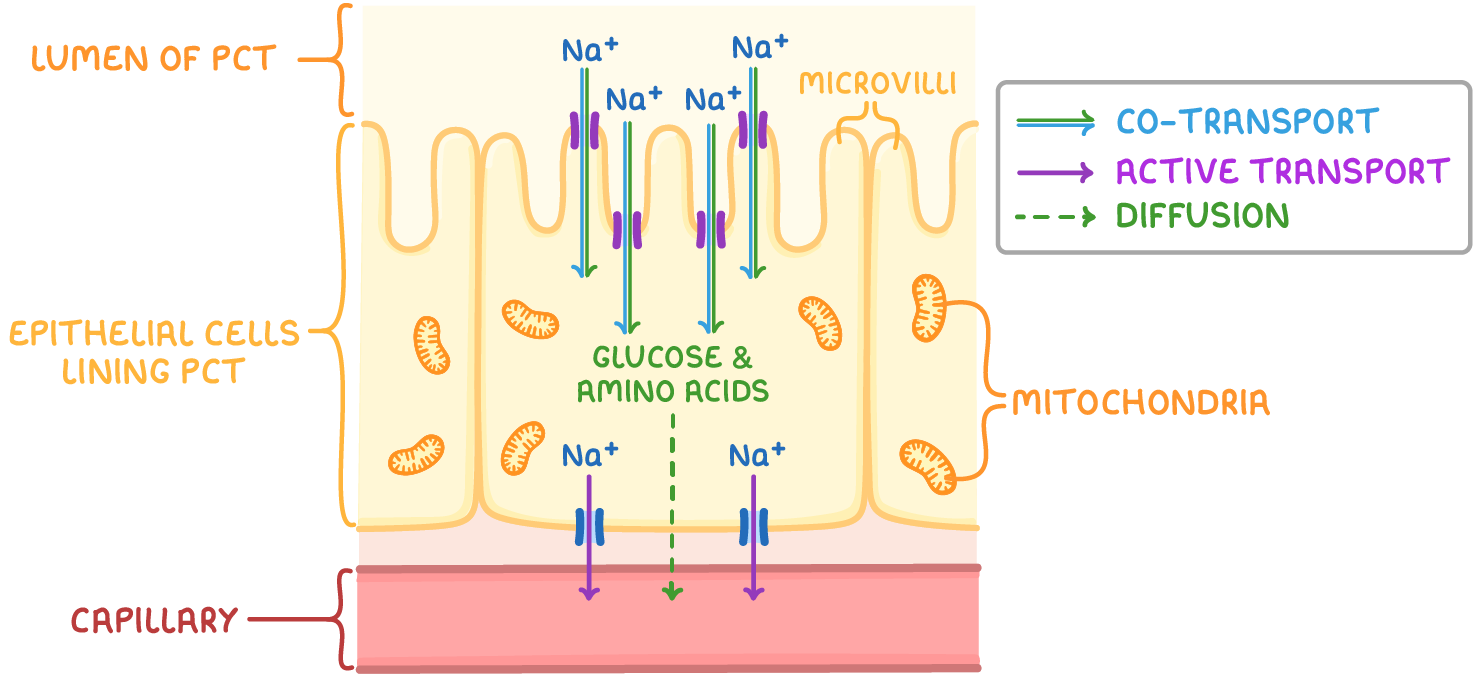Selective Reabsorption
This lesson covers:
- The structure and function of the proximal convoluted tubule
- Reabsorption in the proximal convoluted tubule
- The role of the distal convoluted tubule
Adaptations of the proximal convoluted tubule
The proximal convoluted tubule, an essential component of the nephron in the kidney, is lined with specialised epithelial cells. These cells are adapted to help reabsorb various substances from the filtrate back into the bloodstream.
Key adaptations of epithelial cells in the proximal convoluted tubule:
- Microvilli - These are small, finger-like projections that greatly increase the surface area for reabsorption.
- Basal infoldings - These structures further increase the surface area for moving substances into surrounding blood capillaries.
- Numerous mitochondria - These organelles provide ATP for the active transport processes involved in reabsorption.
- Co-transporter proteins in the plasma membrane - These allow co-transport of substances from filtrate into epithelial cells.
The combination of these adaptations enables the rapid and efficient reabsorption of essential molecules such as glucose, amino acids, chloride ions, sodium ions, and water back into the bloodstream.
Reabsorption in the proximal convoluted tubule
In the proximal convoluted tubule (PCT), a significant portion of the filtrate's components, including most glucose, amino acids, ions, and a substantial 85% of the water, are reabsorbed.

The reabsorption process:
- Sodium ions (Na+) are actively transported into blood capillaries, reducing the Na+ concentration in epithelial cells lining the PCT.
- Na+ moves from the PCT lumen into the epithelial cells, down its concentration gradient.
- Na+ is co-transported with substances like glucose and amino acids into the epithelial cells.
- These reabsorbed molecules can then diffuse into blood capillaries.
This process is crucial for keeping useful molecules in the body while simultaneously eliminating waste products.
The role of the distal convoluted tubule
The distal convoluted tubule (DCT) makes final adjustments to the filtrate's content, mainly by reabsorbing water and salts.
The reabsorption process involves:
- The reabsorption of any remaining useful substances, primarily through active transport.
- The alteration of DCT membrane permeability to regulate further reabsorption of water and solutes.
- The regulation of blood pH by selectively reabsorbing certain ions.
Like the PCT, the DCT has microvilli and mitochondria to help with these processes. Hormones can also influence the adjustments made in the DCT, further fine-tuning the composition of the urine.